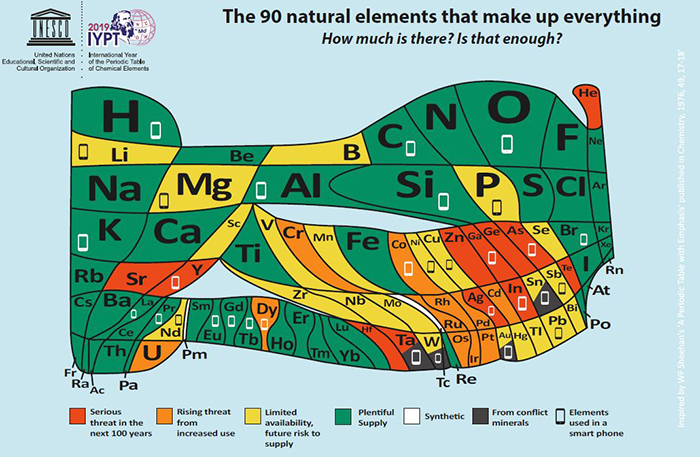New periodic table factors in impact of smartphone disposal
We are living in a very disposable age and there is no better illustration of this than the smartphone industry. When the humble mobile phone first started to become ubiquitous back in the late 1990s, it was unthinkable that it would be a device that we would simply toss away after 12 to 18 months. However, as the number of devices has increased, they have become a far more disposable commodity.
While most people these days are very environmentally conscious – recycling all manner of waste, adopting smart meters in the home etc, the process of smartphone disposal is fraught with problems. Their sealed construction makes disassembly practically impossible, so the majority are shredded and sent for smelting, to separate the precious metals within for reuse.
However, this is a fairly inefficient process - there are nearly 100 million pounds of toxic e-waste generated each year due to smartphone disposal, and an estimated 11% of the gold that is mined annually is lost to these meltdowns.
There were around 1.57 million smartphone users in 2014. However, this is expected to nearly double by 2020. And this sustained increase comes with certain consequences. Despite their compact nature there are around 30 chemical elements featured within your average smartphone, including copper, gold, silver, lithium, cobalt, aluminium, silicon, oxygen and potassium. And the rate at which smartphones are being discarded, combined with dwindling supplies, their origin from conflict zones and their failure to recycle, have meant that many of these elements have essentially been rendered as endangered.
It is estimated that in the EU alone, around ten million phones are discarded or replaced every month. That’s quite a lot of chemical elements that are rendered effectively useless as a result.

To raise awareness of this growing issue the European Chemical Society (EuChemS), representing more than 160,000 chemists, have redrawn the Periodic Table, which was revealed to the European Parliament on Tuesday, highlighting the chemical elements used in smartphones and the ones that are being significantly depleted as a result (its launch also coincides with the 150th anniversary of the Periodic Table). As such they have urged the public to change their phone only once every two years.
David Cole-Hamilton, EuChemS Vice President and Emeritus Professor in Chemistry at the University of St Andrews, said: ‘‘It is astonishing that everything in the world is made from just 90 building blocks, the 90 naturally occurring chemical elements.
“There is a finite amount of each and we are using some so fast that they will be dissipated around the world in less than 100 years. Many of these elements are endangered, so should you really change your phone every two years?”





